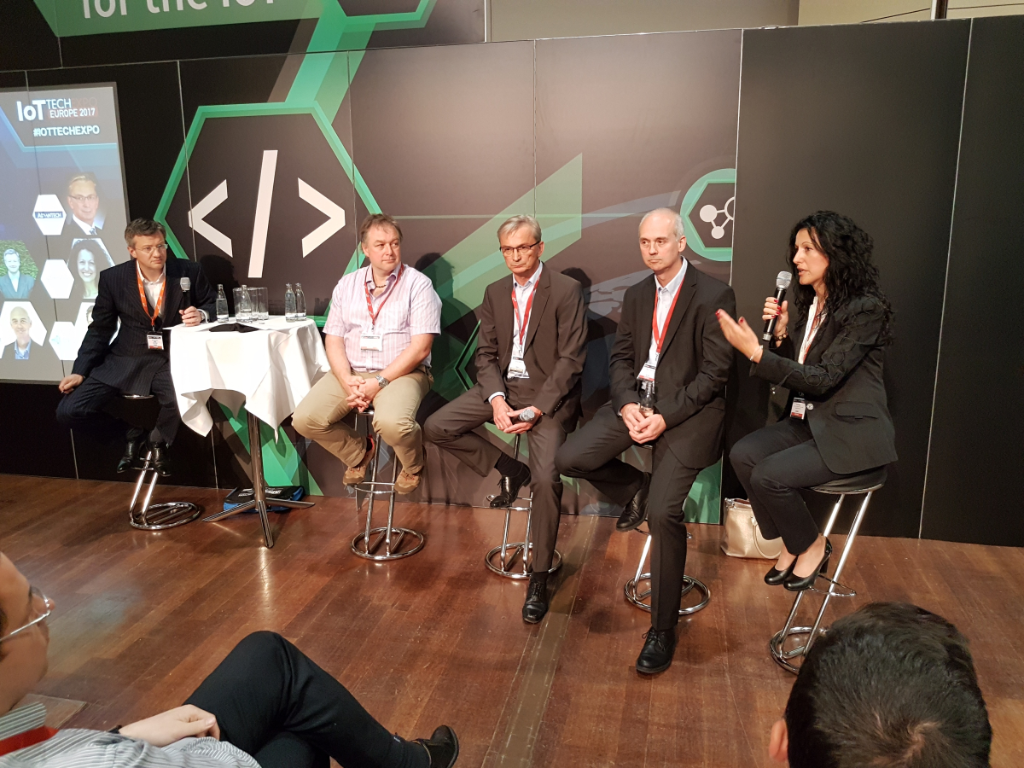By Livia Rosu, HomeGrid Forum Marketing Workgroup Chair

Livia Rosu speaking on the panel ‘Discovering the world on connectivity – Unlocking the promise of the IoT’ at the IoT Tech Expo in Berlin
Last week I spoke on the panel ‘Discovering the world of connectivity – Unlocking the promise of the IoT’, as part of the ‘Developing for the IoT’ track at the IoT Tech Expo in Berlin. Aside from connectivity, there are many aspects of the IoT to consider, including security.
As recent events have shown, we live in an age of digital warfare and need to constantly update and enhance our cybersecurity to remain protected while online – something that is instrumental to our modern lives, user satisfaction, and peace of mind.
During the panel, I discussed the three factors that make for a great IoT connectivity solution, both for home and industry users: high performance, no interference, and security.
The traditional, and recognized, way of enabling security communications in networks of all types is using a unique security key shared by all devices communicating in a specific network/cell, which is segmented by the home or company SSID, depending on the network topology.
While this implementation is a mandatory requirement for secure communication, (it isolates those devices from the interference generated by others in separate homes or networks), it may provide a gateway for more sophisticated security threats, such as ones we are seeing today. One solution to this is ‘per-link’ security encryption, which provides a unique security key between each pair of devices. One compromised device or link cannot spy on the other devices belonging to the same network simply because they use different keys when pairing. This prevents aggregated passwords from being exposed, when used on multiple Wi-Fi hotspots generated by multiple IoT devices. G.hn technology offers specific algorithms for ensuring ‘per-link’ security encryption.
Another critical implementation for ensuring a smooth IoT user experience is the right combination of technologies. It is important to note that there is no single great technology that can successfully address all use cases. Consider the variety of cabling infrastructure from home to home, the numerous network topologies, and building wall limitations. Wireless dead zones are a part of contemporary life, and highlight the worse-case scenarios that need to be addressed and solved to ensure robust, always-on connectivity, in every single corner of the user home.
The service providers that choose to combine the mobility of wireless cells with the robustness of the wired backbone will ultimately benefit from the best sustained performance throughout the home and will maximise coverage for their users.
This is where G.hn comes in. Apart from being a globally recognized Gigabit home networking technology based on ITU-T standards, G.hn provides the most robust highway for the wireless community, provides a single service delivery platform for entertainment, for work – for all digital lifestyle needs – across any wire, simply, reliably, and perhaps most importantly, securely.
HomeGrid Forum is attending CES Asia this week in Shanghai! Stop by booth #5616, Hall N5 to find out more about the Forum, G.hn, and the future of IoT connectivity.
